#house and lot near san fernando pampanga
Text
Brand New Premium 5 BR in Capitol Homes, Quezon City
Luxurious living starts here! Brand new 5BR house w/ pool & panoramic Sierra Madre views in Capitol Homes QC. 3 stories, 6 baths, auto garage & parking for 8. Perfect for families. ₱92M. Inquire Now! #jmlistings

View On WordPress
#foreclosed house and lot for sale in san fernando#foreclosed house and lot for sale in san fernando pampanga#Herencia San Fernando#house and lot for sale in angeles pampanga#house and lot for sale in mabalacat pampanga#house and lot for sale in pampanga#house and lot for sale in san fernando pampanga#house and lot in pampanga#house and lot in san fernando pampanga#house and lot near san fernando pampanga#Mawing#mawing estate#pampanga house and lot for sale rush#san fernando house and lot
0 notes
Text
Resort Like Amenities (Madonna Residences)
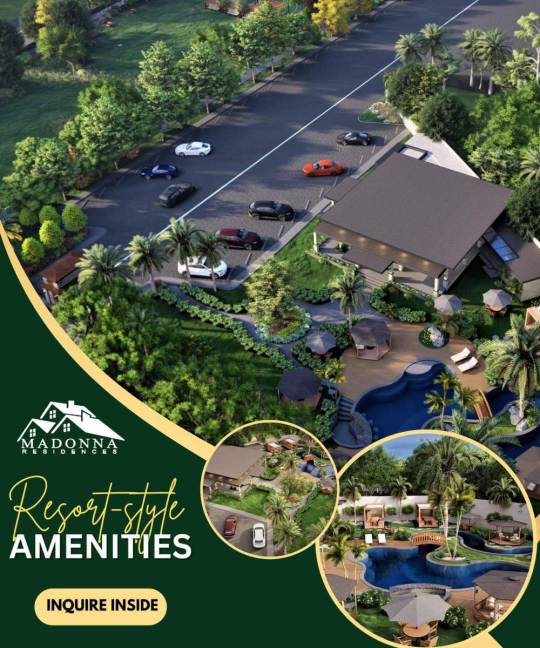
View On WordPress
#Affordable house and lot#Bank Financing#Easy Access#home for you#Luxurious Home#Mc Arthur Hi way#Near in clark#San Fernando Pampanga#The house Propertee
0 notes
Text
A Comprehensive Guide to Real Estate Investment in San Fernando, Pampanga

When considering the top real estate investment locations, a deep understanding of the city’s intrinsic attributes and market trends is essential. San Fernando, Pampanga, known for its rich cultural heritage, dynamic economy, and historical significance, is fast becoming a focal point for real estate investors and potential homeowners. Dive deep into this detailed guide to grasp the essence of San Fernando: from its thriving real estate market, premier properties, shopping hubs, educational institutions, transportation networks, healthcare facilities, to its recreational spots. This guide serves as your compass for making informed real estate decisions in San Fernando, Pampanga.
Table of Contents
Introduction to San Fernando, Pampanga
Real Estate Market Overview in San Fernando
Highlights of Hot-Selling Properties
Shopping Malls
Education
Transportation
Medical Facilities
Leisure Destinations
1. Introduction to San Fernando, Pampanga
Geographic Location: San Fernando is the bustling capital city of Pampanga, strategically situated in the Central Luzon region.
Barangays: San Fernando consists of 35 barangays, each offering varied living experiences and contributing to the city’s cultural tapestry.
Land Area: The city spans an area of 67.74 km², boasting a harmonious blend of urban development and green landscapes.
Population: With over 306,000 residents, San Fernando thrives as a hub of activity, culture, and commerce.
Economic Overview: Traditionally, San Fernando has been an agricultural city. Still, with its strategic location, it has expanded its horizons to commerce, retail, and several other industries.
Featured Industries: While agriculture remains foundational, San Fernando is seeing substantial growth in the retail, service, and tourism sectors.
Infrastructure Development: San Fernando is well-connected with a network of roads and highways, making it easily accessible and boosting its appeal for businesses and residents alike.
2. Real Estate Market Overview in San Fernando
With the city’s continual growth, there’s a surge in interest for house and lot for sale in San Fernando Pampanga and condo for sale in San Fernando Pampanga. San Fernando offers a spectrum of real estate options, from luxurious estates to budget-friendly homes.
3. Highlights of Hot-Selling Properties
Azure North: A paradise of luxury and modern living.
Amaia Scapes San Fernando: Where modern design meets affordability.
Alpine Residences: A symbol of elegance and convenience.
Montrose Parkview: Experience the pinnacle of comfortable living.
4. Shopping Malls
San Fernando promises a delightful shopping experience, with malls and markets offering a mix of local and international brands.
5. Education
The city is home to several esteemed educational institutions, ensuring top-notch education for its youth.
6. Transportation
Efficient transportation, including jeeps, buses, and tricycles, coupled with its strategic location near major highways, ensures San Fernando remains well-connected.
7. Medical Facilities
With numerous hospitals and clinics, San Fernando guarantees exceptional healthcare for its residents.
8. Leisure Destinations
From historical landmarks to modern recreational facilities, San Fernando provides diverse options for relaxation and entertainment.
In wrapping up, San Fernando, Pampanga, stands as a beacon of growth, culture, and opportunities. Its rich history, coupled with modern amenities and a vision for the future, makes it an unparalleled choice for real estate investments. Whether you’re looking to settle down or invest, the city of San Fernando beckons with unmatched potential.
Source: Lionunion Real Estate
0 notes
Text
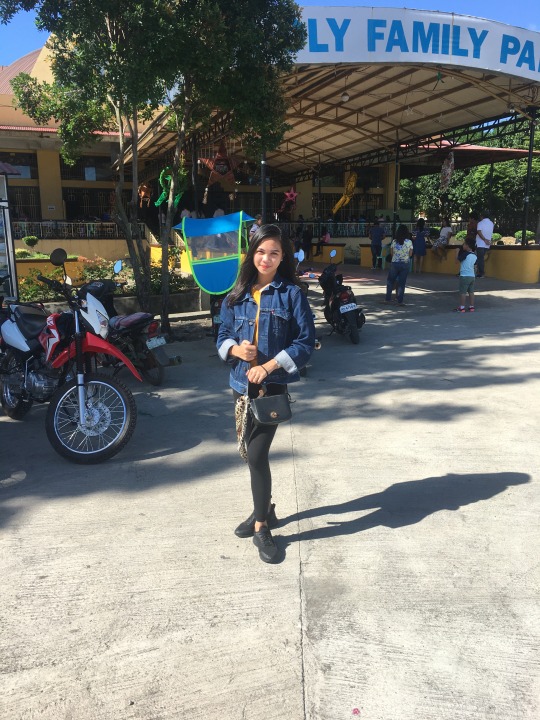

Holy Family Parish
Baliok, Dumoy Davao City
Located at 8025 Baliok, Toril, Davao City, Davao del Sur. When I went there, the mass was on going. I observed the place and the church as well. It ni e but not that so developed church.
The place is big outside and wide enough to accommodate people in going and attending masses.
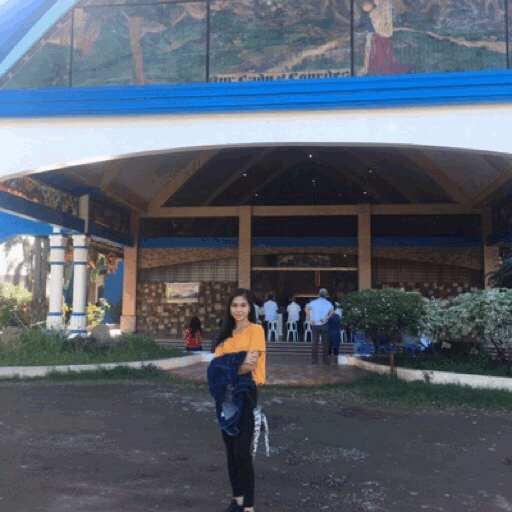
Our Lady of Lourdes
Bangkal, Davao City
The most miraculous and visited Shrine of the Blessed Virgin Mary in the world is that of Our Lady of Lourdes. Lourdes is a small village in the South of France near the Pyrenees mountains. It is here that the Blessed Virgin Mary chose to reveal herself as the Immaculate Conception to 14 year old Bernadette Soubirous in a place called Massabielle, where the city dumped its garbage. Massabielle was a dark, rocky place with a grotto covered with bushes. It was in a hollow near one of the big rocks that the Virgin Mary appeared on February 11, 1858.

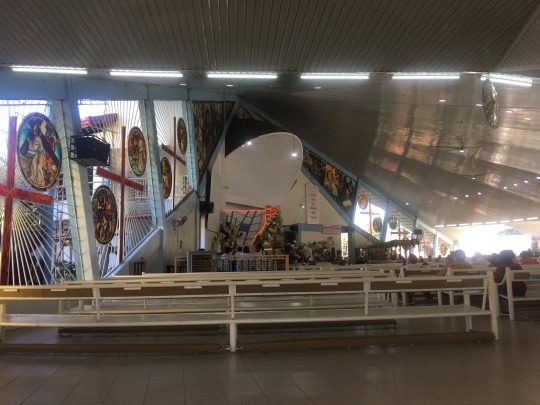
San Lorenzo Ruiz
Talomo, Davao City
1982, a one hectare vacant lot owned by the Diocese of Davao was home to several squatters and became the subject of judicial proceeding.The court, through Judge Martinez, awarded ownership of the contested lang in favor of the Diocese, thereby sealing the site of the future San Lorenzo Ruiz Parish in Barangay Talomo. An edifice made of light materials was constructed and became the church building of the up and coming parish. On July 17, 1983, the first mass was offered at the church site. A regular Sunday mass was scheduled in the month of August with pastoral lectures in the afternoon.
Masses were held at the center chapel of the Christian community where GKKs belonged; conduct of formation seminar is centralized with the formation team; the Parish Pastoral Council and the Parish Finance Council were created and construction and renovation of the church continued. On the other side, other completed and on-gping projects include the construction of the stage, repainting of the church, contsruction of the perimeter fence and installation of stained glass on the main altar and both sides of the church.
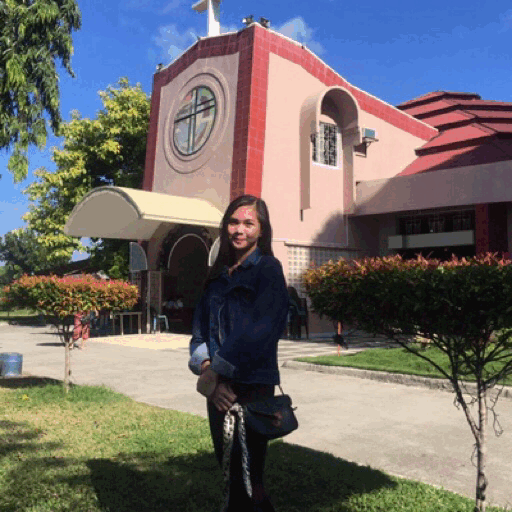
Our Lady of Assumption
GSIS Matina, Davao City
January 18, 1952. Land donation was made by Doña Vicenta Monteverde vda. De Tionko for which Assumption Church would be located.1956. The Redemptorist Fathers led by Fr. John Scanlan, CSsR came and started building a mission church.August 15, 1959. Our lady of the Assumption Parish was launched. Fr. Jean Bernard Bazinet, P.M.E. became the first parish priest.
When I went there the mass was still going on, that is why I didn’t have the chance to get inside and take some photos. But anyways, the area is clean and very peaceful. The place is also wonderful it is near the Sto. Niño Shrine.

Virgin de Los Remedios Parish
Toril Davao City
Located at Toril, Davao City. Bishop Guerrero requested the image of the Virgen de los Remedios, already venerated as Our Lady of Remedies from Baliti, Pampanga to be borrowed by San Fernando to help with a new apostolate working towards peace and reconciliation.
When I got there, there are some people who clean the premises of the church in preparation for the Sunday mass. The parking area is being renovated at that moment and I don’t get inside the church because we’re lacking of time but it is beautiful.

Sto. Niño Shrine
Shrine Hills, Matina, Davao City
The shrine has a canteen, a retreat house, a souvenir shop, a church, and a wide plain of bermudagrass that embraces the ground.The place is great for meditation and self-reflection. The place is very silent and solemn. Perfect place to pray, reflect, meditate. During the Holy Week, the shrine is well visited to have the Bisita Iglesia and Station of the Cross. The main event of the shrine is during the Feast of Senor Santo Niño every 3rd Sunday of January.
It is a very quite place. When I went there the mas was going on. I went there with my father. the church itslef is not that big to cater the people, but the church is open and the place is wide and big. Youcan also being your own chair and sit outside the church but still participate.

Sto. Rosario Parish
Toril Davao City
Sto. Rosario Parish is where I belong. The Parish has a well structured church. A nice arrangment of chairs inside. It can accomodate a lot os people who wants to listen to the words of God. The current Parish Priest in Sto. Rosario Parish is Fr. Victor Isidro G. Gilay.
Actually I am also a member of an organization in the Parish. I am a reader. And as a reader I always enjoy reading the words of God and relay it to the people.
1 note
·
View note
Text
Time travelling back to 19th Century Philippines at Las Casas Filipinas de Acuzar
“May mga bagay na maiiwan natin sa nakaraan pero hindi ibig sabihin na mababaon ang lahat sa limot”. – I Love You Since 1892
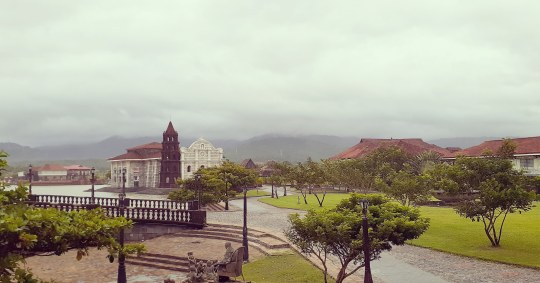
The Province of Baatan is one the most historical places in our country. Aside from being known for the significant historical events like the Death March and Battle of Bataan during World War II, Bataan has also transformed itself as a heritage and cultural hub because of Las Casas Filipinas de Acuzar which is a heritage resort located in Bagac, Bataan.

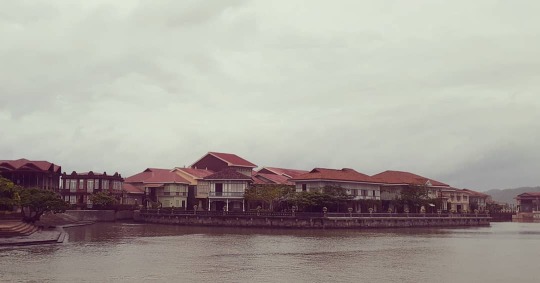
For someone who loves history and architecture, this is a dream come true. I learned about this place from one of my professors in college. I was encouraged when we discussed it in class. I have dreamt of coming here since then. I can’t believe that the “someday” I promised myself finally came. Each heritage houses here were restored and preserved with pieces from its original structure that has kept its secrets alive through time. It is very surreal. Time travelling to 19th Century Philippines was made possible here because of the heritage conservation efforts of Mr. Jose “Gerry” Acuzar by rebuilding the Spanish Colonial Era Heritage Houses and turning it more than just a resort or tourism destination but also a place for learning history and appreciating our rich Filipino culture and heritage.
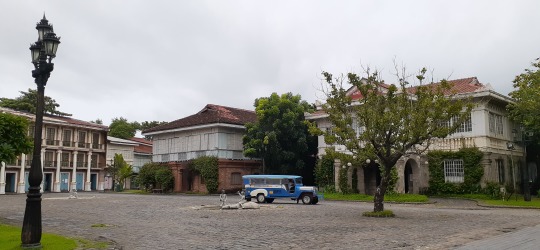
This place has also been a filming site of Heneral Luna, Goyo and Quezon’s Game which is why every corner reminded me of it. It was like walking into the film itself and being part of it. If there is a chance that they will be making the film adaptation of the Historical Fiction, I Love You Since 1892, I can imagine it happening here. This is a perfect setting.
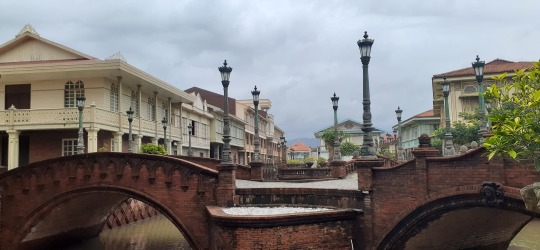
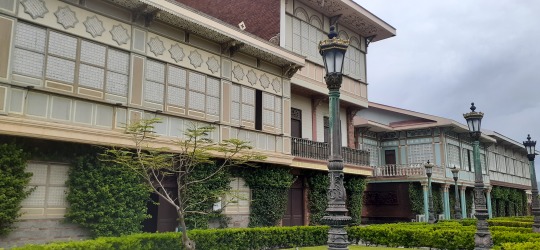
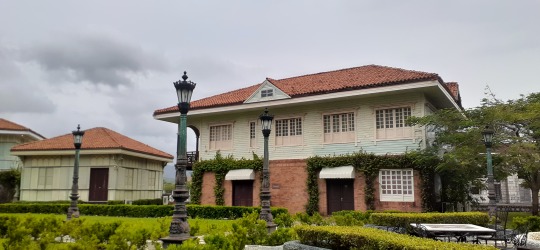
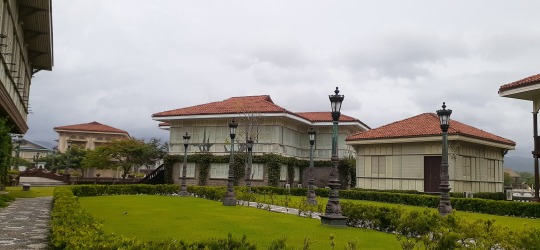

We availed the walking heritage tour inclusive of access inside some of the heritage houses, tour guide, welcome drinks, cold towels and free raincoats if it is raining. I will be sharing some of the highlighted structures and heritage houses at the resort as well as some of the things I learned there.
CASA BINAN
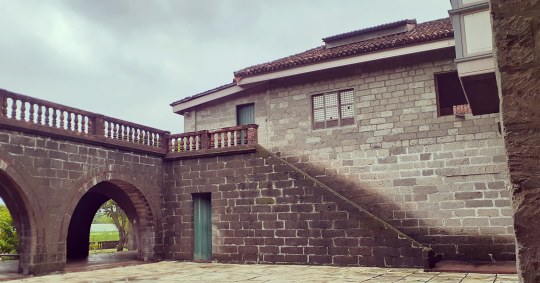
Looks familiar? If you watched Heneral Luna, you will remember that this is the courtyard where Gen. Antonio Luna was betrayed and brutally killed in the film. Casa Binan is a replica of the house where Dona Teodora Alonzo, mother of Jose Rizal grew up and lived. You can also feel that a lot of tragic events happened here. After some time, it came to be known as Alberto Mansion. Its house materials and relics were transferred here to recreate the historic house in Laguna.
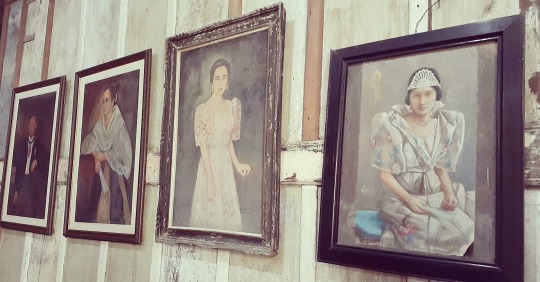
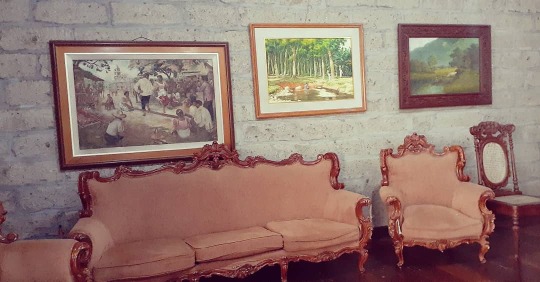


Each houses once have a small fenced space near the window where they can dry their plates after washing them. Also, they have ventanillas below, a window for more ventilation since electricity, electric fan and aircondition weren’t invented yet by then.
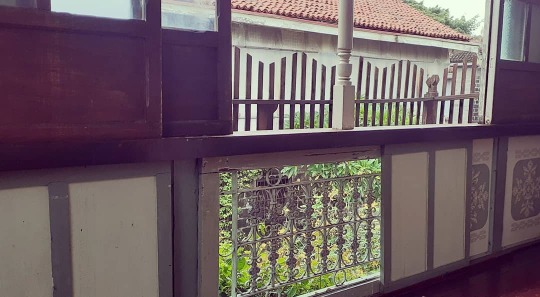
CASA MEXICO
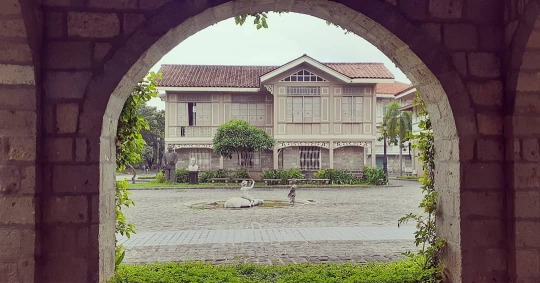
Casa Mexico is a bahay na bato in Mexico, Pampanga. I don’t know why for some reasons, I was attracted to this house. This is my favorite among the ancestral houses at Las Casas. I love its architectural structure and design. According to the story, this house was totally destroyed. However, they were able to save some of its original materials from the junkshop and reconstructed it using old photographs as their guide for its reconstruction. Because of that, it is considered as the “phoenix rising from the ashes”.
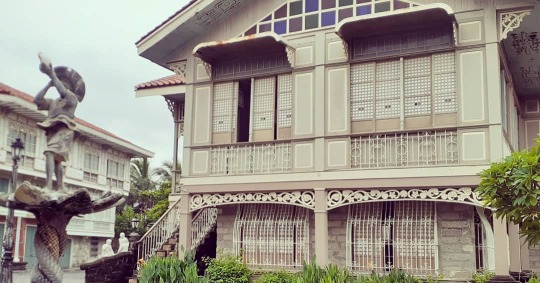
CASA JAEN
Casa Jaen was built in 1901 by Hilarion Santiago. It is called the “White House” because it served as the residence of the first mayor of Jaen. Moreover, it bares the crown-like design called “acroterion” or crown callados which is a status symbol saying that the one who lives in the house is rich and prominent. Despite its grandeur, this house also witnessed a horrifying event. Jose Carlos, also a mayor lived in the house, was attacked. The house was strafted from the outside with the attempt for his assassination because of politics. He eventually surrendered by waving a white cloth. The house still stands with the evidences of the gunshots in the bullet holes that marked the horrifying event.

CASA UNISAN
Casa Unisan was owned by Antonio Maxino from Quezon Province whose entire family was murdered. Only the youngest daughter, Carmen was able to escape and survive with the help of their househelper by hiding her in a bayong for dirty laundry. Casa Unisan currently serves as a restaurant offering different cuisines.

With this story about Carmen and her family, I was reminded of the story of the Romanovs of Russia. The animated film “Anastasia” was inspired by the fall of the Romanov Dynasty. It was believed that only Anastasia Romanov and her grandmother survived with the help of a young boy working in the palace. Although debatable whether Anastasia survived, recent results from the investigation of historians has proven that she too died that night.
PASEO DE ESCOLTA
The Paseo de Escolta is a replica inspired from the old commercial structures of the old business district in Manila famed during the 1900s. Currently, it has souvenir stores on the ground floor while the upper floors served as a hotel for tourists.

CASA BYZANTINA
Casa Byzantina can be originally founds in Binondo, Manila. It is a typical structure of bahay na bato that is built to protect the people from earthquake. Its ground floor is built of stone and bricks while its upper storey are made of various Philippine hard wood. It was lease to tenants after World War II and also became the home to 50 families by 2009. It was later restored and transferred at Las Casas to become a luxurious heritage house accommodating more guests with butler service.

CASA LUNA
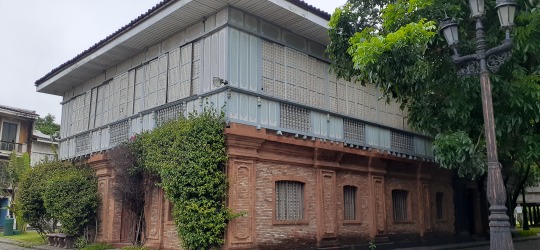
Casa Luna was built in 1850. It is named after the Luna Brothers, Antonio and Juan. It has also witnessed several significant points in our history. It became a venue for gatherings and headquarter of the United States America Forces in the Philippines of the group planning to capture Gen. Yamashita.
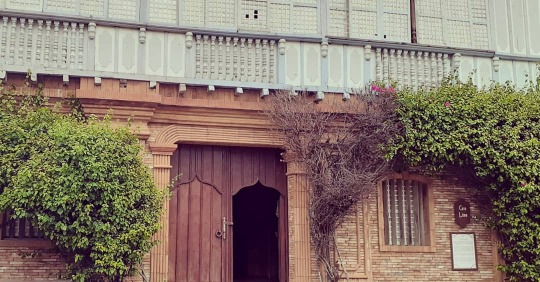
CASA QUIAPO


Casa Quiapo was also known as Casa Hidalgo. It was built in 1867 designed by first Philippine Architect Felix Arroyo. Before it became the first School of Fine Arts of the University of the Philippines, it is where prominent artists like Juan Luna and Felix Hidalgo used to train. The school also gave birth to brilliant artists like Fernando Amorsolo and Guillermo Tolentino.

After some time, it was transferred to Padre Fausta St. where the building housed a bowling alley, abortion clinic, dormitory, and live sex shows. Las Casas have the building blessed to ward of the negativity because of its past. Currently, the building housed the exhibit of Bellas Artes Project.


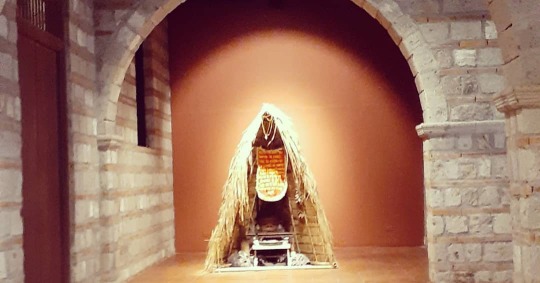


CASA BALIUAG
Casa Baliuag was built in 1898. It is located near Baliuag Church and once served as the municipal hall of Baliuag in 1950s. It has an intricate highly floral motif evident in the wood carvings of the fascade. The lower part of the house became the waiting area for Bulakenos bound for Manila. Because many people stood in front of the houses while waiting for a ride, the owner decided to set up a photo studio and post office business.

TRAMVIA
Before PNR, LRT and PNR, we have tramvias/ streetcar that is steam operated. This is the mode of transportation in various streets of Manila from the late 1800s- mid 1900s. It said that this was once the envy of Asia.
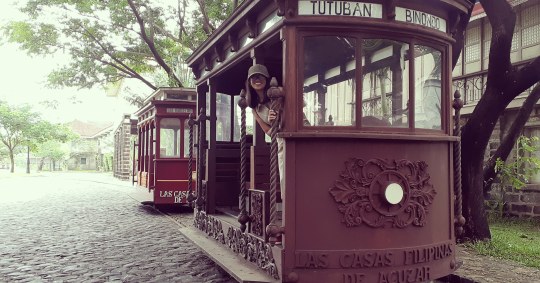
PLAZA DE CASTRO
I was taken by surprise when I saw it in the map and told my friends to see this plaza. I am not even sure if this the one since I suck at reading maps. But I am including this here. I didn’t know we have a plaza here. I feel so entitled and honor to have plaza named after our family. Hahaha joke!

SANTUARIO DE SAN JOSE
This is a replica of Santuario de San Jose, also known as the Balanga Cathedral.
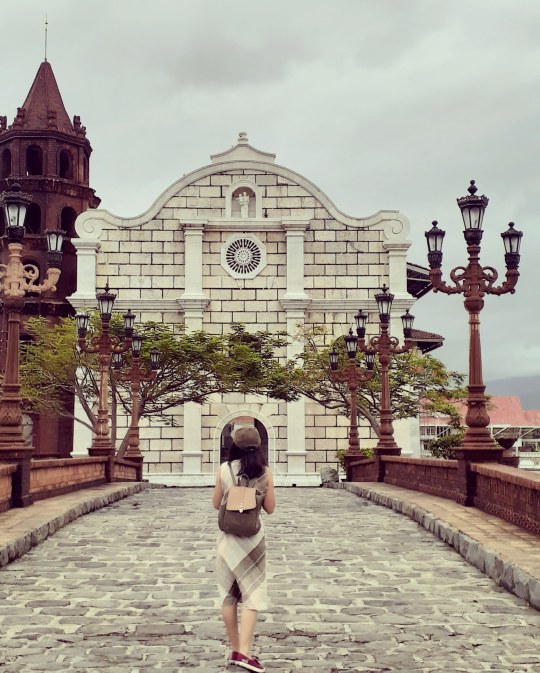
PLAZA MAYOR DE TOBIAS
Of all the stories, I forgot about the explanation for this. It has three women holding different things. I forgot the symbolism in this statue.

LOLA BASYANG
A homage for Lola Basyang’s timeless tales. Lola Basyang became an iconic image of a grandmother gathering her grandchildren for a bedtime story. Her stories became part of the rich local culture of storytelling that has fascinated generations of Filipinos. Lola Basyang is the pen name of Severino Reyes, founder and editor of Liwayway Magazine.
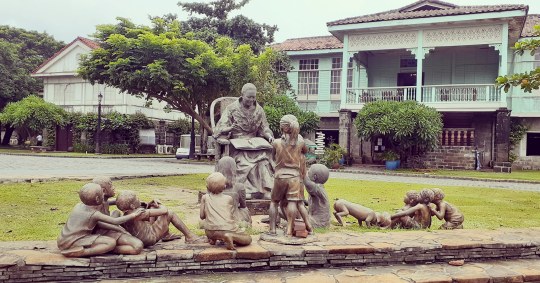
JONES BRIDGE
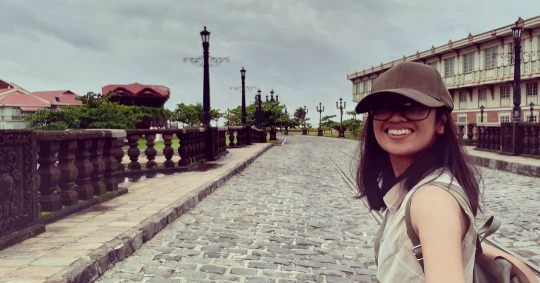
Jones Bridge is just near Lola Basyang’s statue. The Jones bridge is connected to Hotel de Oriente and the other side of the resort with heritage houses. One fascinating detail in this bridge it is that it has statues below of mythical creatures in our Philippine Folklore like tikbalang, engkanto and shokoy.

HOTEL DE ORIENTE
Hotel de Oriente was originally built in 1889 in Binondo, Manila near Binondo Church. It was considered the first premiere luxury hotel in the Philippines. Jose Rizal once stayed at the hotel after arriving from Hong Kong the moment he realizes it was already too late to go home to Calamba, Laguna. During that time, the hotel is also one of the establishments that has a telephone aside from the Malacanang Palace. When the hotel got destroyed at war, it was restored at Las Casas and became a convention center that can hold up to 1,000 people. It is also where the APEC Summit 2015 was held. This hotel holds so much history.

CASA LADRILLO

Casa Ladrillo is one of the heritage houses that perfectly captured the European architecture. Also one of my favorites. It serves as one of the resort’s vacation houses. It is said that it got its name from the Spanish term that translate to the word “bricks”.

LAMBINGAN BRIDGE

I am not that sure about this one. This is said to be the “lambingan bridge”. When I searched for this, this is what it was called. At the center is like an open well made of steel grills and a romantic place where you can make a wish of the love your hear desires.
ESTERO DE BINONDO
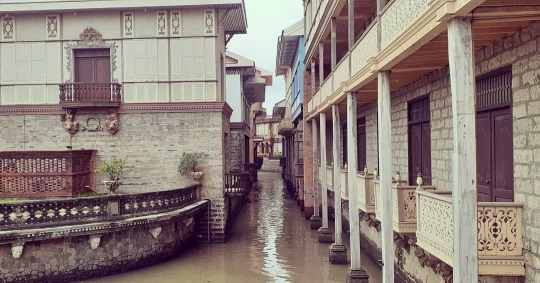
This is the Estero de Binondo. If you will be availing the package for river cruise in a gondola, you’ll be passing by here. It feels like Venice.
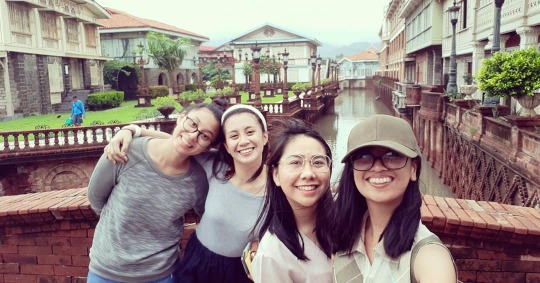
You’ll get to see the beautiful architecture highlighting the verandas. We often get confused with veranda and azotea/ terrace. The azotea is the balcony that can be usually found infront of the house. While verandas can be found at the back of the house.
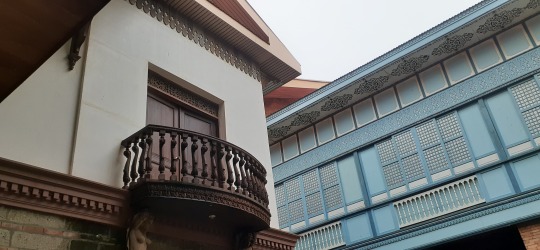
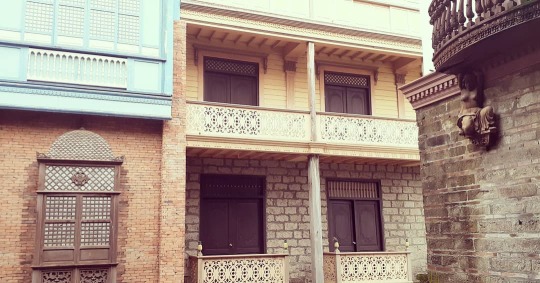

LA PUESTA DEL SOL
Another one that looks familiar? In Quezon’s Game, this street was part of several scenes in the film. This is one of the most notable. In fact, most of the scenes were filmed here at Las Casas. I just really can’t help not to fangirl every time I pass by the structures that would remind me of it. Every corner became part of the historic film.

FRONT BEACH
During summer and when the weather is good, there are inflatables at beach front. Unfortunately, the weather is not that good when we got there. There was a low pressure area so no inflatables. But during summer, it is one of the fun activities here at the resort.

I took photo of this arch instead. Arch of the Centuries? Will it bring me back to 1892? I am having I Love You Since 1892 feels again. This is what happens when you read the book before going to Las Casas. Hahaha
A MILLENNIAL WITH AN OLD SOUL

I grew up fascinated with history and architecture. In fact, it is what really urged me to travel to Las Casas. It became part of my bucket list. I was also encouraged by the historical biopic films like Heneral Luna, Goyo and Quezon’s Game. Just recently, I just read the Historical Fiction, “I Love You Since 1892”. I cannot help but remember scenes from the book and imagine it happening here. I feel like I am Carmela Isabella from the 21st Century who accidentally time traveled to 1892 to rewrite the story of Carmelita Montecarlos and Juanito Alfonso.
NOSTALGIC

“Nostalgic. I think that is the best word to describe my experience and how I feel after visiting Las Casas Filipinas de Acuzar. It gives you this longing feeling for the memory you have there. Las Casas is more than a tourism destination or a resort. It is a place for looking back to the grandeur of architecture in 19th Century Philippines. The conservation efforts for each heritage houses has kept its stories and secrets alive after all this time. May we all learn from history and celebrate our rich Filipino culture evident in these structures. For someone who loves history and architecture, this place is a dream come true. I want to go back again someday for new learnings, experiences and memories to long for again. This wraps my Las Casas Story.” –via Instagram @kyna_dc
#mylascasasstory#lascasasfilipinasdeacuzar#wanderlascasas#heritage#history#culture#filipino#architecture#travel#tourism#bataan#philippines#itsmorefuninthephilippines#iloveyousince1892
16 notes
·
View notes
Text
Disaster Ready? That Maybe my Community
While many students await for class suspension announcements as dark clouds loom over the neighborhood, worries and anxiety arise among others in the community. Such feelings can often only be consoled by the promise of safety and security. As in the case at telabastagan, san fernando, pampanga, people especially in households near creaks and rivers, become troubled whenever typhoons are being reported to arrive. This, however, is not the only natural disaster that has been subjecting the people to disturbance and problems. Last April 2019, a 6.2 magnitude earthquake has shaken the lives of the people in the community. Turmoil, asset destructions, and injuries has lead the people into an abrupt pause from their busy lives. I could still remember the sound of the furniture shattering as they fall off to the ground, and the feeling of adrenaline as my system clamoured for an immediate response. Immediately, i have deduced that it is not a memory that someone would want to relive. As though natural disasters aren’t enough, the barangay captain has mentioned that our community has also been battling against criminal and fire issues. This lead me to think...
What has been the primary reason behind these disaster-induced challenges?
Visiting the barangay hall to conduct an interview, has shed light to this question. Unlike fire and crimes, natural disasters are definitely not something that is within the control of any citizen in the community, not even the authoritative figures such as the barangay officials. Although technology and different broadcasting media have been a lot of help in identifying, and preparing for these disasters, subsequent problems still varies in degree because some people in the barangay are relatively more vulnerable to disasters than others. One factor that has been rendering the people susceptible was their location. As has been said above, those living around creeks and rivers tend to be more adversely affected especially during typhoons because the water level increases faster in their area. Another factor which impedes the preparation of the community, and thus makes them more vulnerable, was the lack of funds. According to the official, whenever strong typhoons strike, not only the health and physical stability of the citizens become at stake. Several community infrastructures (i.e. buildings, roads, and bridges) as well as the livelihood of the people tend to also be negatively affected. This, along with other concerns, have in turn, rendered the community in need of more financial assistance and better monetary allocation strategies.
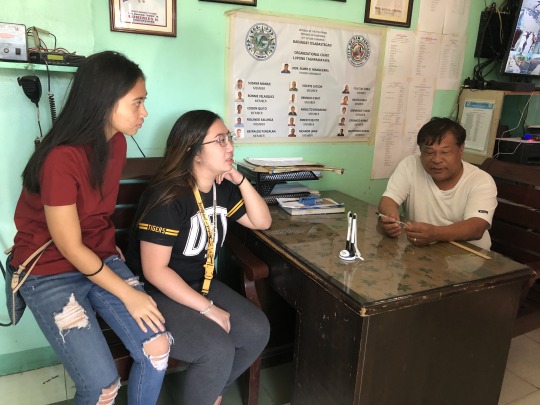
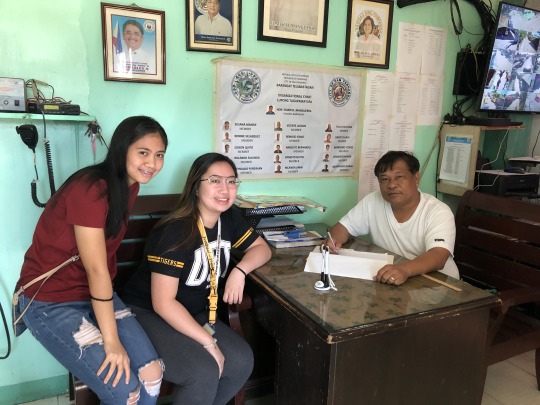
Despite this, are we resilient enough to combat what the disasters may bring?
There’s no telling how exactly severe the disasters are and who specifically are going to be in grave situations. However, as one community, a culture of preparedness is fostered in order to mitigate as much risks as possible. In lieu with their duty as public servants, the Barangay officials conduct conferences/ meetings with rescuers, members of BDRMM and Bantay Bayan in order to plan the necessary measures to take during times of devastating calamities. Guided by the BDRRM Council, Public Information office and other concerned organizations, resources provided by the government are also being maximised, to establish a disaster ready and safe environment. One helpful investment that was mentioned was the installment of CCTV cameras. This has been effectively used in not only decreasing crime rates, but also in keeping track of people who violate rules on proper trash disposal. In a way, it has aided in establishing discipline among the people.
Does the lifestyle of the people coincide with what the BDRMM plan calls for?
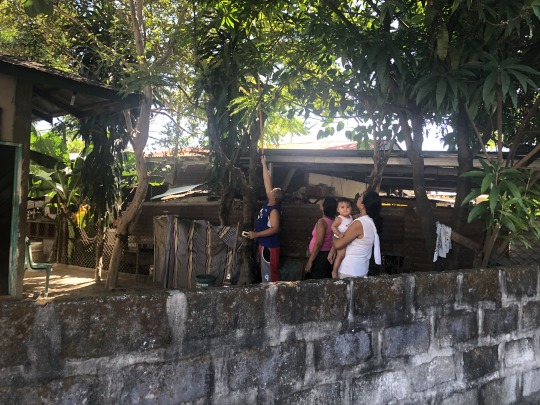
As i tread my way through the community, i have observed the simplicity and yet quaint living of the people which have remained unknown to me in the past years. I even passed by a family who clustered in front of their house to harvest mangoes. It was a beautiful sight which reminded me of how togetherness could bring about value to what we are doing. It was also impressive that there aren’t much litter in the streets. This, I could say has been reflective on the improving attitude of the people towards nature and their surrounding. However, as there is no such thing as a perfect community, there are still sites which poses possible risks in the long run. Specifically, there was a bridge in the community which is built over a water full of trash. Just like in our country in general, the problems on pollution hasn’t been completely eliminated despite the projects that has been launched in the past years. For instance, despite the regulation regarding the prohibition of plastic usage, plastic garbages among others could still be seen on several areas. This only shows that there is still lacking in the plan we’re currently implementing. Both parties (i.e. government and the public) as a result needs to address this in ways possible.
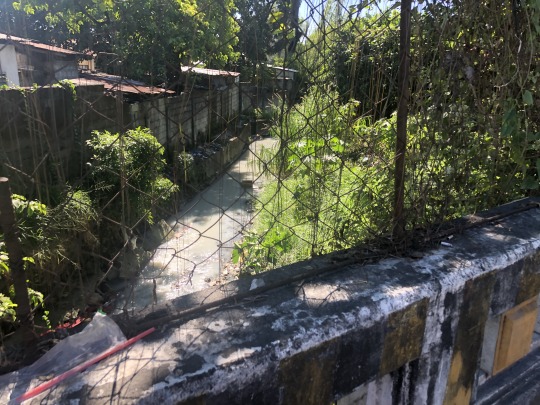
What the government can do:
Strengthen law enforcements regarding sustainability/ environmental protection
Increase funds for BDRRM plans
Conduct regular evaluations on the readiness of municipalities/barangays for disasters
What You and I can do as members of the community:
Support the projects of the Barangay and the government which we deem to serve the common good.
Voice out our ideas on ways to improve the plans regarding disaster risk reduction, and management.
Spread awareness regarding disaster readiness.
Provide relief goods, first aid and other assistance to the less fortunate in the community, especially at times of calamities.
These are only some of the possibilities which we could engage ourselves in, in order to help better the world we live in. By exerting our utmost efforts, our collective prowess and intellect could eventually bring us to the ideal prospects we each have in mind.
1 note
·
View note
Photo
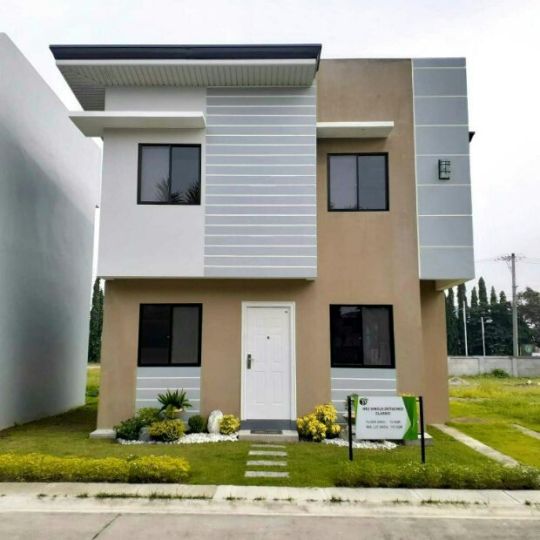

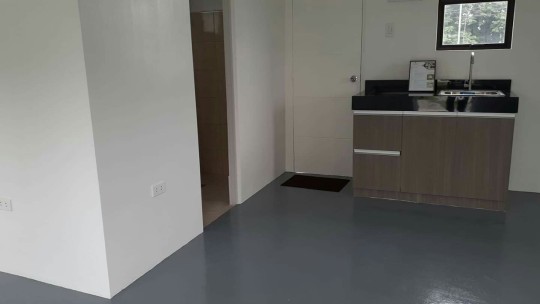

🌻As of September 20, 2021 💟THE HORIZON 2 Residences located at Brgy. Del Carmen City of San Fernando, Pampanga via Intersection Way: Dolores Heights en Kia near Green City Hilaga/Paskuhan Village/Woodgrove Brgy. (Sampalok Road) Dolores Church (Our Lady of Sorrows Parish) 🏠SD Model 70 Classic Lot Area 110 Floor Area 70 🌺Pag IBIG Financing Selling Price 3,039,600 Add Misc. Fee 7% 212,772 TCP 3,252,372 Loan Value 2,594,000 Total Equity 658,372 Less Res. Fee 25,000 Net Cash Required 633,372 40% Equity for 1st to 8th months 31,668 60% Equity for 9th to 30th months 17,273 Balance Up to 30 years at 6.5% 30yrs Loan Amort. 16,395 Gross Monthly Income 54,652 Combine Pyt. Of Amort & Equity 33,669 🏦Also available via Bank (UCPB currently accredited Bank)/In House Financing 👨💼-RcDimituiRealty
0 notes
Photo
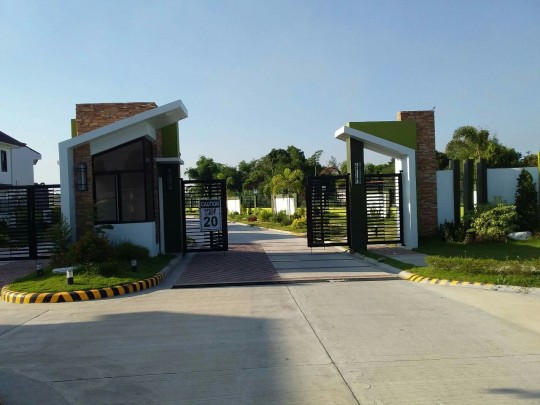



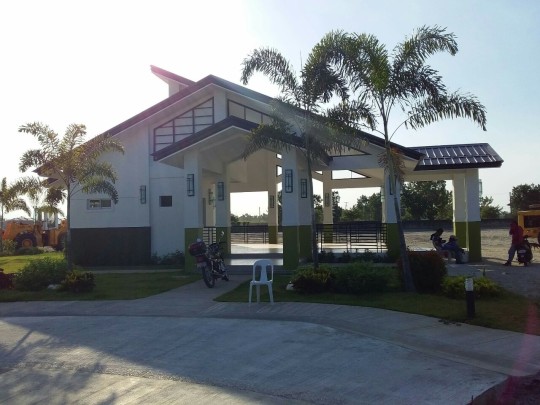
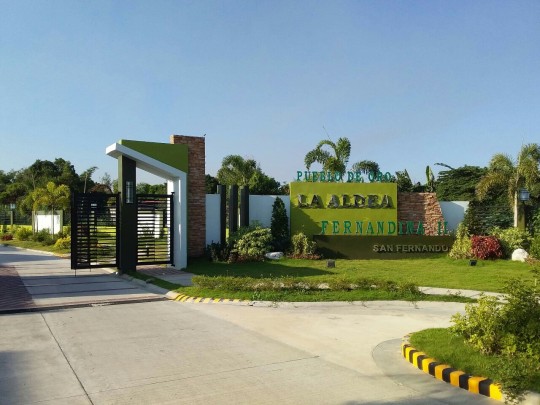
Price Increase Implemented @ Pueblo de Oro La Aldea Fernandina Old Model TownHouse located at Brgy. Del Carmen City of San Fernando, Pampanga via Intersection Way: Dolores Heights en Kia near Green City Hilaga/Paskuhan Village/Woodgrove Brgy. (Sampalok Road) Dolores Church (Our Lady of Sorrows Parish) NLEX Mexico Exit en also via New Tourism Road intersection (spotlight) Del Rosario-Sindalan to Malpitic Road As of December 15 , 2020 Sample Computation Home Development Mutual Fund (Pag-ibig) Financing INSIDE UNIT PREMIUM Lot Area 40 sqm Floor Area 47 sqm Selling Price 1,545,718 Add 7% Misc. Fee 108,200 TCP 1,653,918 Loan Value 1,535,000 Total Equity 118,918 Less Res. Fee 10,000 Net Cash Required 108,918 Equity for 1 to 12mos. 9,702 Balance 30 yrs to pay @ 6.5% 9,702 Also available via Bank (UCPB currently accredited Bank)/In House Financing -RcDimituiRealty
0 notes
Photo
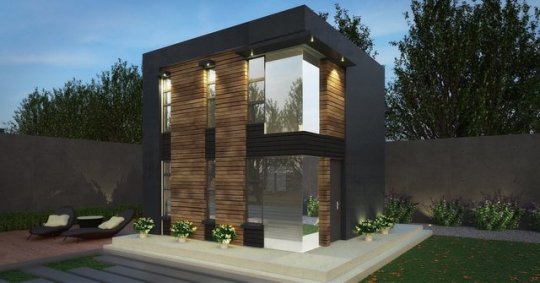
✨ SELLING MY PROPERTY ✨ Brand New House and Lot Project Name: Revolution Flavorscapes Premium Lot (facing park, establishments and amenities) Location: Lakeshore, Pampanga (near Mexico exit) 5 minutes away from SM San Fernando 15 minutes away from Clark International Airport 40 minutes away from SM North EDSA 2 hours away from Baguio City Size: 121 sqm. 2-bedroom unit 2-storey house 2 toilet and bath Ready For Occupancy Price: Php 5M (current value is P5.4M and will still appraise in a few months) •Reason for selling: Liquidating assets for new investments For inquiries and viewing schedule, please feel free to message me at 0935-3594101. #Philippineinvestments #houseandlotforsale #realestate #villageliving (at Revolution Flavorscapes at Lakeshore Pampanga) https://www.instagram.com/p/B1vwNP9hwhibrJ79uaeG5ZY1DZKf3JA6yMA1Oc0/?igshid=bw9irc72075x
0 notes
Text
Real Estate Soars High with Philippines’ "Uninterrupted Economic Growth"
Real Estate Soars High with Philippines’ "Uninterrupted Economic Growth"
According to the Philippine Statistics Authority (PSA), the Philippine economy expanded by about 6.2 per cent in 2018. It was lower than the average annual growth rate of 6.6 percent from 2012 to 2017 but still places the country as among the fastest-growing economies in Emerging Asia. During Q4 2018, industry had the fastest growth, with 6.9 percent, followed by services (6.3 percent) and agriculture (1.7 percent).
The total number of foreign tourist arrivals rose by 7.7 percent to 7.1 million people in 2018 from a year earlier, according to the Department of Trade and Industry (DTI). South Korea remained the country’s top tourism market with 22.3 percent share, followed by China (17.6 percent), the US (14.5 percent), Japan (8.9 percent) and Australia (3.9 percent).
The economy is expected to grow at a faster pace of 6.7 percent this year, amidst improving macroeconomic conditions and slowing inflation, according to ADB President Takehiko Nakao.
The Philippine economy grew by an average of 6.3 percent annually from 2010 to 2016 with the previous administration’s socioeconomic reform including anti-corruption campaign which wowed foreign investors and caused consumer confidence to surge. The Philippines’ investment ratings were upgraded to investment grade by Moody, Standard & Poors’, and Fitch Ratings. The Philippines’ competitiveness improved sharply, with a Global Competitiveness Index rank of 47th out of 140 economies in 2015-16, up from 52 in 2014, 59 in 2013, and 65 in 2012.
Today, favorable opportunities and a strong appetite for residential, office and commercial spaces continue to fuel optimism in the Philippine real estate sector.
“In the current economic climate, the opportunity is for developers to expand their office, residential and hospitality footprints outside Manila. Developers should seize this opportunity to build more offices in key hubs outside Manila, and acquire land parcels near soon-to-be expanded regional airports. Hoteliers should continue facilitating intra-Asian demand, by implementing mobile payment platforms popular with Chinese and Korean tourists,” Colliers International Philippines said in its published report in August 2019.
President Rodrigo Duterte’s ambitious US$180-billion “Build, Build, Build” program also makes a difference in the overall outlook both from local and foreign investors. BBB is designed to modernize the country’s infrastructure by rolling out 75 flagship projects, including 6 airports, 9 railways, 3 bus rapid transits, 32 roads and bridges, 4 seaports, 4 energy facilities, 10 water resource projects and irrigation systems, and 5 flood control facilities, among others.
Nine of these projects are currently under construction, including the Clark Airport expansion; the first phase of the Metro Manila subway; the North-South railway projects; the 130-km first phase of the Mindanao railway; the Kaliwa water supply project; and the Cavite flood control project, among others.
Some 28 projects are projected to be completed before the end of Duterte’s term in 2022. These projects are expected to sustain strong economic growth, raising annual infrastructure spending by about 3 to 7 percent of GDP until 2022.
“We will make the next few years the golden age of infrastructure in the Philippines to enhance our mobility and connectivity, and thereby spur development growth. In other words, we are going to build, build and build,” the president said.
The Rise of Emerging Cities
A lot of urban planners and developers have taken time to develop other cities and municipalities outside the metropolis to decentralize the political decisions, decongest the cities and democratize the resources giving way to the development of emerging cities. For highly respected urban planner and architect Felino Palafox Jr, principal of Palafox Associates, the emerging cities are Puerto Princesa, Zamboanga, Clark, San Fernando (Pampanga), Laoag, Vigan, Legazpi, Balanga, Batangas, Lucena, and Iloilo owing to their adequate infrastructure such as international airports and seaports that could develop bigger opportunities for trade and tourism to generate employment, a healthy workforce, and efficient land use.
Davao and Cebu, of course, are way ahead of the group and should promote better mobility by creating walkable and bikable streets complemented by robust mass transport systems.
Then there is Clark Global City housing the new Clark International Airport with expected almost 8,000 average daily passenger volume from over 200 international and 400 domestic flights. The new city is also home to several Grade A office towers, international hotel chains and upscale residential condominium projects of DataLand, Century Properties, and Udenna’s PH Resorts. This is not to mention the in-progress completion of the West Aeropark with five office towers, two of which is fully occupied by BPO companies while the rest are pre-leased by a Philippine Offshore Gaming Operator (POGO) company.
Emerging city by the bay
Currently building by the bay is D.M. Wenceslao and Associates Incorporated, the master developer of Aseana City, one of the largest undeveloped landbanks in Metro Manila, bordering Mall of Asia, PAGCOR Entertainment City along the shores Manila Bay fronting Parañaque City.
“Basically, we are developing that whole area as a new city, to be a next-generation development,” the developer said.
Located along Roxas Boulevard, the project offers a spectacular view of the world-famous Manila Bay’s beautiful sunset.
Nearby is Aspire Corporate Plaza, a P2-billion office building to be completed by 2020. A project of GOLDEN BAY Fresh Landholdings, Inc., Aspire is touted as the “first and only property in the Macapagal Bay Area to sell office spaces. The 10-storey Aspire Corporate Plaza is aimed primarily at small and medium-sized enterprises. With an approximate total area of two hundred four (204) hectares, Aseana City offers a closer view to history as it’s in the vicinity of the walled city of Intramuros and country’s bastion of business achievement – Binondo, Makati and Ortigas.
Making PHL cities liveable
In the Philippines, investment opportunities for livable cities could give a prize of at least $82 billion and 4.4 million jobs by 2030,” Systemiq senior advisor Gail Klintworth said during the “Sustainable Cities Summit: Building Liveable Cities” held in October 17 at the Sofitel Philippine Plaza.
Klintworth encouraged private sectors to follow United Nations’ Sustainable Development Goals (SDGs) as the “blueprint” to achieve a better and more sustainable cities and future for all by 2030.
City mayors and private sector representatives took part in the Summit to discuss how to improve the state of local cities and make them more liveable. Mayors of the 145 cities in the Philippines together with private sector professionals and practitioners discussed major issues in developing liveable cities – basic services, mobility, resilience, and GovTech.
Aside from Klintworth, local and international experts were invited to share ideas and best practice around these key challenges and share how current digital trends and emerging technologies can bring about innovation in cities and communities.
Launched at the Summit is the Dashboard and Liveable Cities Challenge. The Dashboard is a visual database of key indicators of all the cities in the Philippines, which will be useful for local chief executives, investors, and residents in assessing the competitiveness and liveability of cities. Meanwhile, the Challenge is a 90-day design competition where cities will have the opportunity to meet mentors and compete to pitch their design solutions to a panel of experts in early 2020.
“Cities are the centers of economic growth and innovation, but the rate of urbanization and internal migration has created new challenges involving disaster resilience, mobility, and the delivery of basic services,” said Liveable Cities Challenge Chairman Guillermo M. Luz. “The Liveable Cities Challenge can help local officials develop comprehensive, replicable, and implementable solutions to improve the liveability of our metropolises, while strengthening local communities in the process.”
0 notes
Text
3 Beds Bungalow in Villaggio Real San Fernando

View On WordPress
#foreclosed house and lot for sale in san fernando#foreclosed house and lot for sale in san fernando pampanga#Herencia San Fernando#house and lot for sale in angeles pampanga#house and lot for sale in mabalacat pampanga#house and lot for sale in pampanga#house and lot for sale in san fernando pampanga#house and lot in pampanga#house and lot in san fernando pampanga#house and lot near san fernando pampanga#Mawing#mawing estate#pampanga house and lot for sale rush#san fernando house and lot
0 notes
Photo

Affordable Home Beside Sm Telabastagan, San Fernando Pampanga HOUSE AND LOT FOR SALE Essel Park Subdivision (near SM Telabastagan and Orchard) Lot:450sqm Floor: 425sqm Description: High ceiling 1 balcony 2 floors 4 rooms with bathrooms 1 gym area 2 car garage (40sqm) 1 spacious receiving area 1 powder room 1 kitchen 1 storage room with bathroom 1 laundry area Garden area v fully furnished -Refrigerator -Microwave -Stove and Exhaust -Wooden acacia 3 Bed frames with memory matress queen size (1 year used) -Japanese dining table -4 split type aircon -1 window aircon for guestroom -1standing living room aircon Schedule your viewing NOW 📞 0970-187-0322 or 0905-285-4928(Whatsapp/Viber) Email: [email protected] Thank you #TheHousePropertee #AffordableHousingInPampanga #AffordableInYou (at San Fernando, Pampanga) https://www.instagram.com/p/CoMCL2USL7z/?igshid=NGJjMDIxMWI=
0 notes
Text
Real Estate Soars High with Philippines’ "Uninterrupted Economic Growth"
Real Estate Soars High with Philippines’ "Uninterrupted Economic Growth"
According to the Philippine Statistics Authority (PSA), the Philippine economy expanded by about 6.2 per cent in 2018. It was lower than the average annual growth rate of 6.6 percent from 2012 to 2017 but still places the country as among the fastest-growing economies in Emerging Asia. During Q4 2018, industry had the fastest growth, with 6.9 percent, followed by services (6.3 percent) and agriculture (1.7 percent).
The total number of foreign tourist arrivals rose by 7.7 percent to 7.1 million people in 2018 from a year earlier, according to the Department of Trade and Industry (DTI). South Korea remained the country’s top tourism market with 22.3 percent share, followed by China (17.6 percent), the US (14.5 percent), Japan (8.9 percent) and Australia (3.9 percent).
The economy is expected to grow at a faster pace of 6.7 percent this year, amidst improving macroeconomic conditions and slowing inflation, according to ADB President Takehiko Nakao.
The Philippine economy grew by an average of 6.3 percent annually from 2010 to 2016 with the previous administration’s socioeconomic reform including anti-corruption campaign which wowed foreign investors and caused consumer confidence to surge. The Philippines’ investment ratings were upgraded to investment grade by Moody, Standard & Poors’, and Fitch Ratings. The Philippines’ competitiveness improved sharply, with a Global Competitiveness Index rank of 47th out of 140 economies in 2015-16, up from 52 in 2014, 59 in 2013, and 65 in 2012.
Today, favorable opportunities and a strong appetite for residential, office and commercial spaces continue to fuel optimism in the Philippine real estate sector.
“In the current economic climate, the opportunity is for developers to expand their office, residential and hospitality footprints outside Manila. Developers should seize this opportunity to build more offices in key hubs outside Manila, and acquire land parcels near soon-to-be expanded regional airports. Hoteliers should continue facilitating intra-Asian demand, by implementing mobile payment platforms popular with Chinese and Korean tourists,” Colliers International Philippines said in its published report in August 2019.
President Rodrigo Duterte’s ambitious US$180-billion “Build, Build, Build” program also makes a difference in the overall outlook both from local and foreign investors. BBB is designed to modernize the country’s infrastructure by rolling out 75 flagship projects, including 6 airports, 9 railways, 3 bus rapid transits, 32 roads and bridges, 4 seaports, 4 energy facilities, 10 water resource projects and irrigation systems, and 5 flood control facilities, among others.
Nine of these projects are currently under construction, including the Clark Airport expansion; the first phase of the Metro Manila subway; the North-South railway projects; the 130-km first phase of the Mindanao railway; the Kaliwa water supply project; and the Cavite flood control project, among others.
Some 28 projects are projected to be completed before the end of Duterte’s term in 2022. These projects are expected to sustain strong economic growth, raising annual infrastructure spending by about 3 to 7 percent of GDP until 2022.
“We will make the next few years the golden age of infrastructure in the Philippines to enhance our mobility and connectivity, and thereby spur development growth. In other words, we are going to build, build and build,” the president said.
The Rise of Emerging Cities
A lot of urban planners and developers have taken time to develop other cities and municipalities outside the metropolis to decentralize the political decisions, decongest the cities and democratize the resources giving way to the development of emerging cities. For highly respected urban planner and architect Felino Palafox Jr, principal of Palafox Associates, the emerging cities are Puerto Princesa, Zamboanga, Clark, San Fernando (Pampanga), Laoag, Vigan, Legazpi, Balanga, Batangas, Lucena, and Iloilo owing to their adequate infrastructure such as international airports and seaports that could develop bigger opportunities for trade and tourism to generate employment, a healthy workforce, and efficient land use.
Davao and Cebu, of course, are way ahead of the group and should promote better mobility by creating walkable and bikable streets complemented by robust mass transport systems.
Then there is Clark Global City housing the new Clark International Airport with expected almost 8,000 average daily passenger volume from over 200 international and 400 domestic flights. The new city is also home to several Grade A office towers, international hotel chains and upscale residential condominium projects of DataLand, Century Properties, and Udenna’s PH Resorts. This is not to mention the in-progress completion of the West Aeropark with five office towers, two of which is fully occupied by BPO companies while the rest are pre-leased by a Philippine Offshore Gaming Operator (POGO) company.
Emerging city by the bay
Currently building by the bay is D.M. Wenceslao and Associates Incorporated, the master developer of Aseana City, one of the largest undeveloped landbanks in Metro Manila, bordering Mall of Asia, PAGCOR Entertainment City along the shores Manila Bay fronting Parañaque City.
“Basically, we are developing that whole area as a new city, to be a next-generation development,” the developer said.
Located along Roxas Boulevard, the project offers a spectacular view of the world-famous Manila Bay’s beautiful sunset.
Nearby is Aspire Corporate Plaza, a P2-billion office building to be completed by 2020. A project of GOLDEN BAY Fresh Landholdings, Inc., Aspire is touted as the “first and only property in the Macapagal Bay Area to sell office spaces. The 10-storey Aspire Corporate Plaza is aimed primarily at small and medium-sized enterprises. With an approximate total area of two hundred four (204) hectares, Aseana City offers a closer view to history as it’s in the vicinity of the walled city of Intramuros and country’s bastion of business achievement – Binondo, Makati and Ortigas.
Making PHL cities liveable
In the Philippines, investment opportunities for livable cities could give a prize of at least $82 billion and 4.4 million jobs by 2030,” Systemiq senior advisor Gail Klintworth said during the “Sustainable Cities Summit: Building Liveable Cities” held in October 17 at the Sofitel Philippine Plaza.
Klintworth encouraged private sectors to follow United Nations’ Sustainable Development Goals (SDGs) as the “blueprint” to achieve a better and more sustainable cities and future for all by 2030.
City mayors and private sector representatives took part in the Summit to discuss how to improve the state of local cities and make them more liveable. Mayors of the 145 cities in the Philippines together with private sector professionals and practitioners discussed major issues in developing liveable cities – basic services, mobility, resilience, and GovTech.
Aside from Klintworth, local and international experts were invited to share ideas and best practice around these key challenges and share how current digital trends and emerging technologies can bring about innovation in cities and communities.
Launched at the Summit is the Dashboard and Liveable Cities Challenge. The Dashboard is a visual database of key indicators of all the cities in the Philippines, which will be useful for local chief executives, investors, and residents in assessing the competitiveness and liveability of cities. Meanwhile, the Challenge is a 90-day design competition where cities will have the opportunity to meet mentors and compete to pitch their design solutions to a panel of experts in early 2020.
“Cities are the centers of economic growth and innovation, but the rate of urbanization and internal migration has created new challenges involving disaster resilience, mobility, and the delivery of basic services,” said Liveable Cities Challenge Chairman Guillermo M. Luz. “The Liveable Cities Challenge can help local officials develop comprehensive, replicable, and implementable solutions to improve the liveability of our metropolises, while strengthening local communities in the process.”
0 notes
Text
Real Estate Soars High with Philippines’ "Uninterrupted Economic Growth"
Real Estate Soars High with Philippines’ "Uninterrupted Economic Growth"
According to the Philippine Statistics Authority (PSA), the Philippine economy expanded by about 6.2 per cent in 2018. It was lower than the average annual growth rate of 6.6 percent from 2012 to 2017 but still places the country as among the fastest-growing economies in Emerging Asia. During Q4 2018, industry had the fastest growth, with 6.9 percent, followed by services (6.3 percent) and agriculture (1.7 percent).
The total number of foreign tourist arrivals rose by 7.7 percent to 7.1 million people in 2018 from a year earlier, according to the Department of Trade and Industry (DTI). South Korea remained the country’s top tourism market with 22.3 percent share, followed by China (17.6 percent), the US (14.5 percent), Japan (8.9 percent) and Australia (3.9 percent).
The economy is expected to grow at a faster pace of 6.7 percent this year, amidst improving macroeconomic conditions and slowing inflation, according to ADB President Takehiko Nakao.
The Philippine economy grew by an average of 6.3 percent annually from 2010 to 2016 with the previous administration’s socioeconomic reform including anti-corruption campaign which wowed foreign investors and caused consumer confidence to surge. The Philippines’ investment ratings were upgraded to investment grade by Moody, Standard & Poors’, and Fitch Ratings. The Philippines’ competitiveness improved sharply, with a Global Competitiveness Index rank of 47th out of 140 economies in 2015-16, up from 52 in 2014, 59 in 2013, and 65 in 2012.
Today, favorable opportunities and a strong appetite for residential, office and commercial spaces continue to fuel optimism in the Philippine real estate sector.
“In the current economic climate, the opportunity is for developers to expand their office, residential and hospitality footprints outside Manila. Developers should seize this opportunity to build more offices in key hubs outside Manila, and acquire land parcels near soon-to-be expanded regional airports. Hoteliers should continue facilitating intra-Asian demand, by implementing mobile payment platforms popular with Chinese and Korean tourists,” Colliers International Philippines said in its published report in August 2019.
President Rodrigo Duterte’s ambitious US$180-billion “Build, Build, Build” program also makes a difference in the overall outlook both from local and foreign investors. BBB is designed to modernize the country’s infrastructure by rolling out 75 flagship projects, including 6 airports, 9 railways, 3 bus rapid transits, 32 roads and bridges, 4 seaports, 4 energy facilities, 10 water resource projects and irrigation systems, and 5 flood control facilities, among others.
Nine of these projects are currently under construction, including the Clark Airport expansion; the first phase of the Metro Manila subway; the North-South railway projects; the 130-km first phase of the Mindanao railway; the Kaliwa water supply project; and the Cavite flood control project, among others.
Some 28 projects are projected to be completed before the end of Duterte’s term in 2022. These projects are expected to sustain strong economic growth, raising annual infrastructure spending by about 3 to 7 percent of GDP until 2022.
“We will make the next few years the golden age of infrastructure in the Philippines to enhance our mobility and connectivity, and thereby spur development growth. In other words, we are going to build, build and build,” the president said.
The Rise of Emerging Cities
A lot of urban planners and developers have taken time to develop other cities and municipalities outside the metropolis to decentralize the political decisions, decongest the cities and democratize the resources giving way to the development of emerging cities. For highly respected urban planner and architect Felino Palafox Jr, principal of Palafox Associates, the emerging cities are Puerto Princesa, Zamboanga, Clark, San Fernando (Pampanga), Laoag, Vigan, Legazpi, Balanga, Batangas, Lucena, and Iloilo owing to their adequate infrastructure such as international airports and seaports that could develop bigger opportunities for trade and tourism to generate employment, a healthy workforce, and efficient land use.
Davao and Cebu, of course, are way ahead of the group and should promote better mobility by creating walkable and bikable streets complemented by robust mass transport systems.
Then there is Clark Global City housing the new Clark International Airport with expected almost 8,000 average daily passenger volume from over 200 international and 400 domestic flights. The new city is also home to several Grade A office towers, international hotel chains and upscale residential condominium projects of DataLand, Century Properties, and Udenna’s PH Resorts. This is not to mention the in-progress completion of the West Aeropark with five office towers, two of which is fully occupied by BPO companies while the rest are pre-leased by a Philippine Offshore Gaming Operator (POGO) company.
Emerging city by the bay
Currently building by the bay is D.M. Wenceslao and Associates Incorporated, the master developer of Aseana City, one of the largest undeveloped landbanks in Metro Manila, bordering Mall of Asia, PAGCOR Entertainment City along the shores Manila Bay fronting Parañaque City.
“Basically, we are developing that whole area as a new city, to be a next-generation development,” the developer said.
Located along Roxas Boulevard, the project offers a spectacular view of the world-famous Manila Bay’s beautiful sunset.
Nearby is Aspire Corporate Plaza, a P2-billion office building to be completed by 2020. A project of GOLDEN BAY Fresh Landholdings, Inc., Aspire is touted as the “first and only property in the Macapagal Bay Area to sell office spaces. The 10-storey Aspire Corporate Plaza is aimed primarily at small and medium-sized enterprises. With an approximate total area of two hundred four (204) hectares, Aseana City offers a closer view to history as it’s in the vicinity of the walled city of Intramuros and country’s bastion of business achievement – Binondo, Makati and Ortigas.
Making PHL cities liveable
In the Philippines, investment opportunities for livable cities could give a prize of at least $82 billion and 4.4 million jobs by 2030,” Systemiq senior advisor Gail Klintworth said during the “Sustainable Cities Summit: Building Liveable Cities” held in October 17 at the Sofitel Philippine Plaza.
Klintworth encouraged private sectors to follow United Nations’ Sustainable Development Goals (SDGs) as the “blueprint” to achieve a better and more sustainable cities and future for all by 2030.
City mayors and private sector representatives took part in the Summit to discuss how to improve the state of local cities and make them more liveable. Mayors of the 145 cities in the Philippines together with private sector professionals and practitioners discussed major issues in developing liveable cities – basic services, mobility, resilience, and GovTech.
Aside from Klintworth, local and international experts were invited to share ideas and best practice around these key challenges and share how current digital trends and emerging technologies can bring about innovation in cities and communities.
Launched at the Summit is the Dashboard and Liveable Cities Challenge. The Dashboard is a visual database of key indicators of all the cities in the Philippines, which will be useful for local chief executives, investors, and residents in assessing the competitiveness and liveability of cities. Meanwhile, the Challenge is a 90-day design competition where cities will have the opportunity to meet mentors and compete to pitch their design solutions to a panel of experts in early 2020.
“Cities are the centers of economic growth and innovation, but the rate of urbanization and internal migration has created new challenges involving disaster resilience, mobility, and the delivery of basic services,” said Liveable Cities Challenge Chairman Guillermo M. Luz. “The Liveable Cities Challenge can help local officials develop comprehensive, replicable, and implementable solutions to improve the liveability of our metropolises, while strengthening local communities in the process.”
0 notes
Text
Real Estate Soars High with Philippines’ "Uninterrupted Economic Growth"
According to the Philippine Statistics Authority (PSA), the Philippine economy expanded by about 6.2 per cent in 2018. It was lower than the average annual growth rate of 6.6 percent from 2012 to 2017 but still places the country as among the fastest-growing economies in Emerging Asia. During Q4 2018, industry had the fastest growth, with 6.9 percent, followed by services (6.3 percent) and agriculture (1.7 percent).
The total number of foreign tourist arrivals rose by 7.7 percent to 7.1 million people in 2018 from a year earlier, according to the Department of Trade and Industry (DTI). South Korea remained the country’s top tourism market with 22.3 percent share, followed by China (17.6 percent), the US (14.5 percent), Japan (8.9 percent) and Australia (3.9 percent).
The economy is expected to grow at a faster pace of 6.7 percent this year, amidst improving macroeconomic conditions and slowing inflation, according to ADB President Takehiko Nakao.
The Philippine economy grew by an average of 6.3 percent annually from 2010 to 2016 with the previous administration’s socioeconomic reform including anti-corruption campaign which wowed foreign investors and caused consumer confidence to surge. The Philippines’ investment ratings were upgraded to investment grade by Moody, Standard & Poors’, and Fitch Ratings. The Philippines’ competitiveness improved sharply, with a Global Competitiveness Index rank of 47th out of 140 economies in 2015-16, up from 52 in 2014, 59 in 2013, and 65 in 2012.
Today, favorable opportunities and a strong appetite for residential, office and commercial spaces continue to fuel optimism in the Philippine real estate sector.
“In the current economic climate, the opportunity is for developers to expand their office, residential and hospitality footprints outside Manila. Developers should seize this opportunity to build more offices in key hubs outside Manila, and acquire land parcels near soon-to-be expanded regional airports. Hoteliers should continue facilitating intra-Asian demand, by implementing mobile payment platforms popular with Chinese and Korean tourists,” Colliers International Philippines said in its published report in August 2019.
President Rodrigo Duterte’s ambitious US$180-billion “Build, Build, Build” program also makes a difference in the overall outlook both from local and foreign investors. BBB is designed to modernize the country’s infrastructure by rolling out 75 flagship projects, including 6 airports, 9 railways, 3 bus rapid transits, 32 roads and bridges, 4 seaports, 4 energy facilities, 10 water resource projects and irrigation systems, and 5 flood control facilities, among others.
Nine of these projects are currently under construction, including the Clark Airport expansion; the first phase of the Metro Manila subway; the North-South railway projects; the 130-km first phase of the Mindanao railway; the Kaliwa water supply project; and the Cavite flood control project, among others.
Some 28 projects are projected to be completed before the end of Duterte’s term in 2022. These projects are expected to sustain strong economic growth, raising annual infrastructure spending by about 3 to 7 percent of GDP until 2022.
“We will make the next few years the golden age of infrastructure in the Philippines to enhance our mobility and connectivity, and thereby spur development growth. In other words, we are going to build, build and build,” the president said.
The Rise of Emerging Cities
A lot of urban planners and developers have taken time to develop other cities and municipalities outside the metropolis to decentralize the political decisions, decongest the cities and democratize the resources giving way to the development of emerging cities. For highly respected urban planner and architect Felino Palafox Jr, principal of Palafox Associates, the emerging cities are Puerto Princesa, Zamboanga, Clark, San Fernando (Pampanga), Laoag, Vigan, Legazpi, Balanga, Batangas, Lucena, and Iloilo owing to their adequate infrastructure such as international airports and seaports that could develop bigger opportunities for trade and tourism to generate employment, a healthy workforce, and efficient land use.
Davao and Cebu, of course, are way ahead of the group and should promote better mobility by creating walkable and bikable streets complemented by robust mass transport systems.
Then there is Clark Global City housing the new Clark International Airport with expected almost 8,000 average daily passenger volume from over 200 international and 400 domestic flights. The new city is also home to several Grade A office towers, international hotel chains and upscale residential condominium projects of DataLand, Century Properties, and Udenna’s PH Resorts. This is not to mention the in-progress completion of the West Aeropark with five office towers, two of which is fully occupied by BPO companies while the rest are pre-leased by a Philippine Offshore Gaming Operator (POGO) company.
Emerging city by the bay
Currently building by the bay is D.M. Wenceslao and Associates Incorporated, the master developer of Aseana City, one of the largest undeveloped landbanks in Metro Manila, bordering Mall of Asia, PAGCOR Entertainment City along the shores Manila Bay fronting Parañaque City.
“Basically, we are developing that whole area as a new city, to be a next-generation development,” the developer said.
Located along Roxas Boulevard, the project offers a spectacular view of the world-famous Manila Bay’s beautiful sunset.
Nearby is Aspire Corporate Plaza, a P2-billion office building to be completed by 2020. A project of GOLDEN BAY Fresh Landholdings, Inc., Aspire is touted as the “first and only property in the Macapagal Bay Area to sell office spaces. The 10-storey Aspire Corporate Plaza is aimed primarily at small and medium-sized enterprises. With an approximate total area of two hundred four (204) hectares, Aseana City offers a closer view to history as it’s in the vicinity of the walled city of Intramuros and country’s bastion of business achievement – Binondo, Makati and Ortigas.
Making PHL cities liveable
In the Philippines, investment opportunities for livable cities could give a prize of at least $82 billion and 4.4 million jobs by 2030,” Systemiq senior advisor Gail Klintworth said during the “Sustainable Cities Summit: Building Liveable Cities” held in October 17 at the Sofitel Philippine Plaza.
Klintworth encouraged private sectors to follow United Nations’ Sustainable Development Goals (SDGs) as the “blueprint” to achieve a better and more sustainable cities and future for all by 2030.
City mayors and private sector representatives took part in the Summit to discuss how to improve the state of local cities and make them more liveable. Mayors of the 145 cities in the Philippines together with private sector professionals and practitioners discussed major issues in developing liveable cities – basic services, mobility, resilience, and GovTech.
Aside from Klintworth, local and international experts were invited to share ideas and best practice around these key challenges and share how current digital trends and emerging technologies can bring about innovation in cities and communities.
Launched at the Summit is the Dashboard and Liveable Cities Challenge. The Dashboard is a visual database of key indicators of all the cities in the Philippines, which will be useful for local chief executives, investors, and residents in assessing the competitiveness and liveability of cities. Meanwhile, the Challenge is a 90-day design competition where cities will have the opportunity to meet mentors and compete to pitch their design solutions to a panel of experts in early 2020.
“Cities are the centers of economic growth and innovation, but the rate of urbanization and internal migration has created new challenges involving disaster resilience, mobility, and the delivery of basic services,” said Liveable Cities Challenge Chairman Guillermo M. Luz. “The Liveable Cities Challenge can help local officials develop comprehensive, replicable, and implementable solutions to improve the liveability of our metropolises, while strengthening local communities in the process.”
0 notes
Text
HOLY WEEK 2017 @ Orani, Bataan
I was born and raised in Manila and having said that means I have no province. My dad and his siblings, however grew up in Bataan and that’s what we consider our province ever since. (My mother is from Manila too.) Back in the days when we were all still in our elementary years, every summer, all of us would leave for Orani to spend Holy Week. We would normally leave Manila on Maundy Thursday and be back Black Saturday/Easter Sunday depending on my dad’s work schedule. (He works in casino so holidays are not really applicable to them.) Me and my cousin, Jiecel though would sometimes stay a little bit longer with our Lola and spend time with our only cousin living there, Ate Irish.
Fast forward to many years later, us, kiddos have grown. Half of us now are already working and the other half are in college. Taking a time off our busy lives in Manila became a problem. The tradition then of coming to Orani became less and less until it wasn’t even a Holy Week “thing” any more. But this year was different. An uncle decided it’s time again for a get-together in our third home, Orani, Bataan!
April 13, 2017, Thursday
We left Manila at exactly 8:05am. As expected, there would already be heavy traffic; the normally 2 hour drive became 5 hours. I didn’t actually felt it though for I was sleeping (and playing Pokemon Go) the first half of our trip. We had a quick stop for bathroom break at Total gas station in San Fernando, Pampanga then off again we go to Peninsula De Bataan where we will be spending the night.
We arrived in the resort at around 12:30pm. To my surprise, the small resort wasn’t as full as I expected it to be. We headed directly to the gazebo where we will have our sumptuous lunch prepared by Tito Arthur and Tita Cel, who lives there. If there’s one thing I can really be proud of with Orani, Bataan, it’s their seafood. They are just really fresh and delicious.
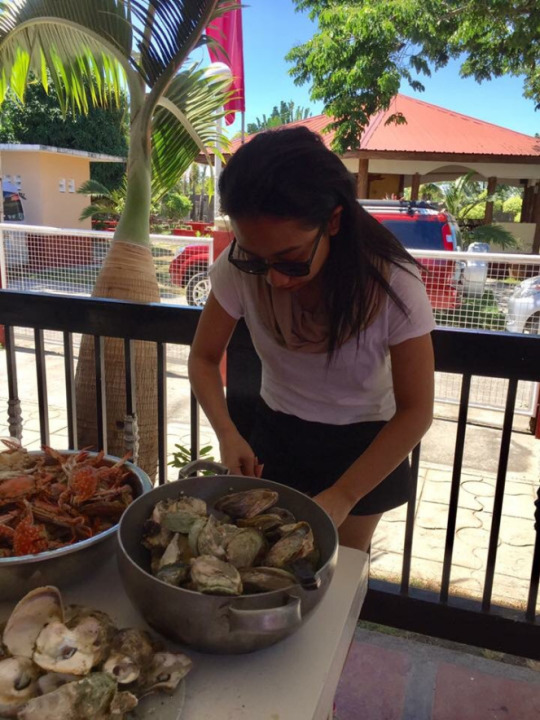
I instantly dig in the seafood. #SeafoodQueen
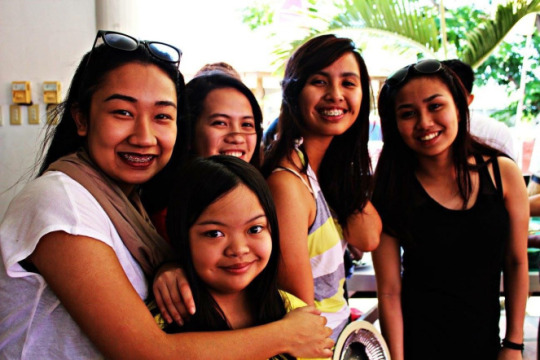

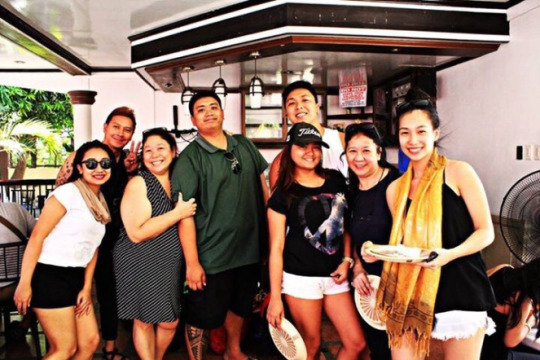
After lunch, we all get settled in our rooms and prepare for the adventure we have planned and up until now, I still can’t believe I agreed. All the kiddos stayed in a dormitory type of room so just imagine how chaotic and fun it was. We rested for a while and geared up to our first outdoor activity: Trekking! – This is my first ever trek so it deserves another blog.
We got back to the resort almost in time for dinner. We were all stinky so all had a shower before we were tasked to set the table for the night’s boodle fight. If I am not mistaken, this is the first boodle fight of our entire family. We had Adobo, Mangga with Bagoong, Grilled Tilapia, Seafood and Meat Balls. Yum! I could still remember how much I ate that night. Sirang sira ang diet!
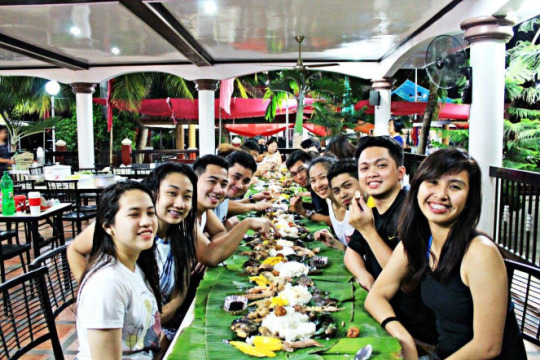
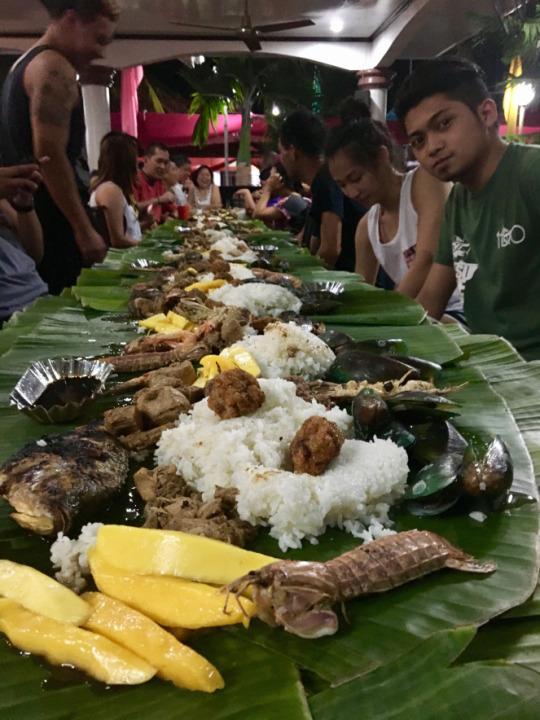

To say that we were so full that night is an understatement. We were 36 all in all and it was really fun to have dined with all of them at once – definitely the highlight of this outing. It was also Tricia’s birthday on the 15th and since half are coming home the next day, we celebrated it a little early.
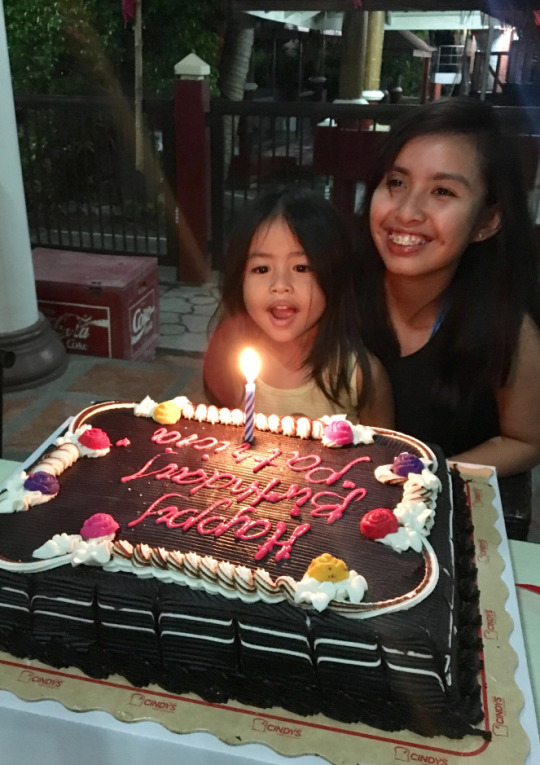
“Happy Birthday, Tricia!🎈”
April 14, 2017 – Friday
As expected, no one from the kiddos would be up early – except maybe Ate Irish who got a kid and Kuya Mac who didn’t join us in the trek. I woke up a little around 9am and was not really surprised to find my father and Tito Mon still drinking. It’s obvious that they were both drunk already as they were jumping from one topic to the other along with the sober titos and my lola. We had breakfast and not long after prepared for lunch. It was just a quick but delicious lunch as we need to check out of the resort at noon.
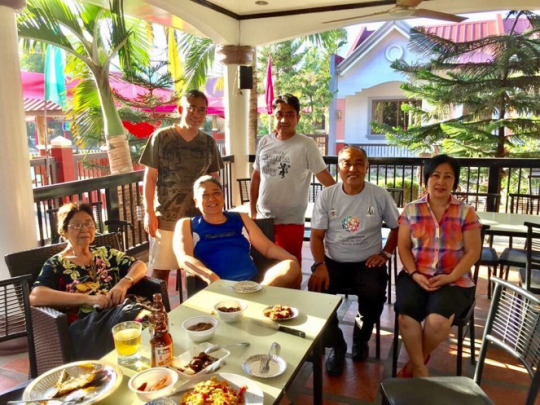
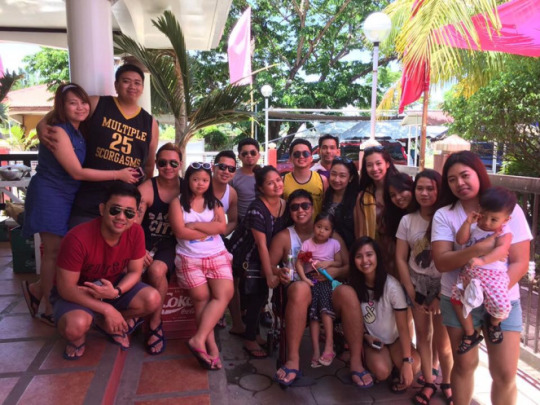
I was supposed to come home as well that day but me and my sister were pulled to stay ’til Sunday. So much drama also happened but we all just kind of shrugged it off and tried to have as much fun as we could. After checking out at Peninsula De Bataan, we went straight to Tito Arthur and Tita Cel’s house where we will spend Friday night before we head to Vista Tala the next day. We rested for a bit and went to Sibol to get charcoals to bring home to Manila. Despite still being dead tired, we all hoped to the van to spend time with each other. Maximizing every opportunity to bond.
When we got back, we were all craving for shake/halo halo to beat the heat. Luckily, a milk tea hub was open that’s almost right next to our home. We all grabbed something refreshing to drink and got back to rest before our much awaited Good Friday Procession. It has been another tradition to watch the procession when we were still little kids. We love seeing the statues of saints decorated beautifully with flowers and lights. Also, the “padugo” and mourning ladies that used to scare us to death. We were lucky that we’re situated near the church so we just have to go out of our gate and we’ll see all this “caros”.

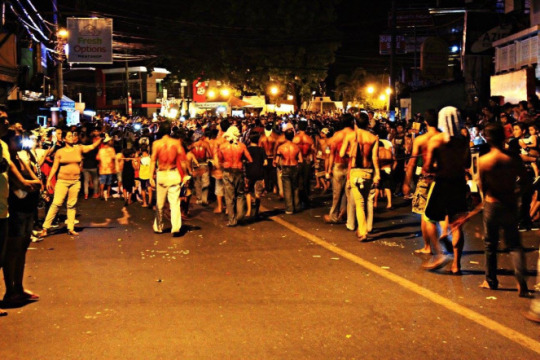
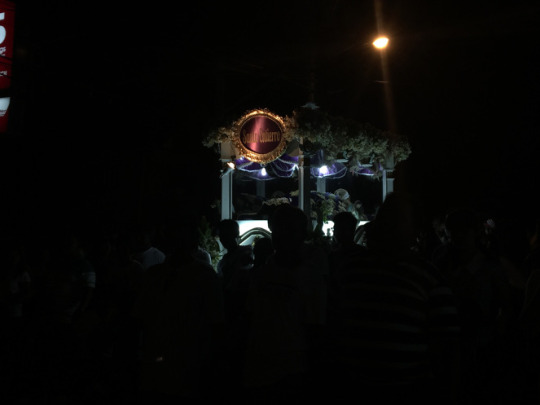
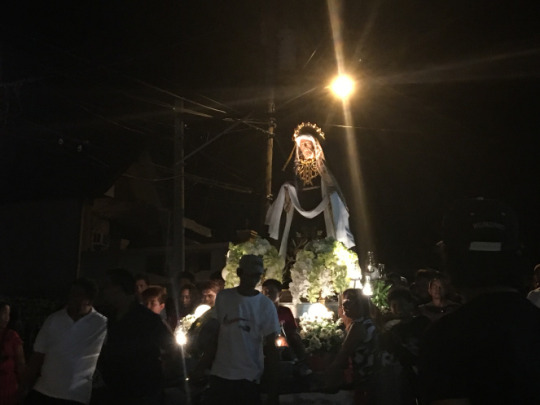
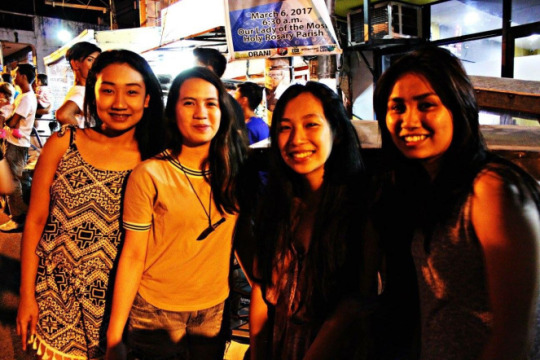

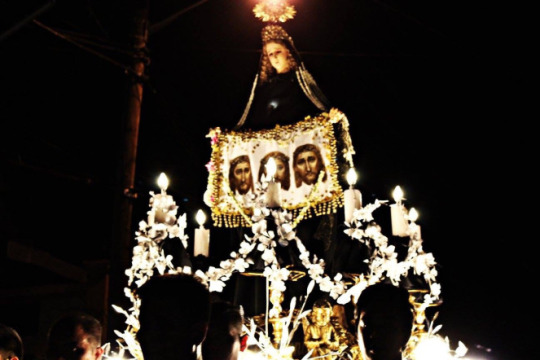
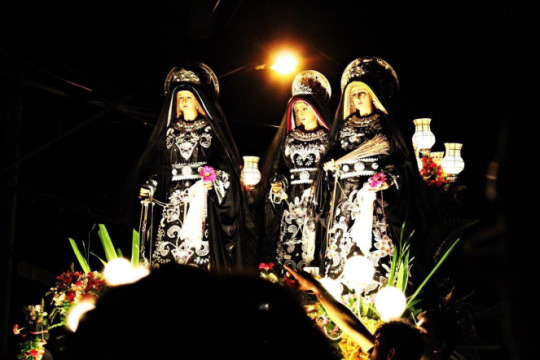

After the procession, we had our dinner and settled ourselves in our respective sleeping beds to cap off the night.
April 15, 2017, Saturday
We all woke up at 5:30am as the kiddos were bound to have a quick beach trip before we head to our next resort, Vista Tala. Since we slept early the night before, we were all up and ready as soon as we got picked up. We had an hour drive before we ended up in the beach were we went years ago. A lot has changed and there were already a lot of people swimming contrary to how I remember it back then. Once we arrived, we instantly sprayed sun block and ran to the beach. We were time constraint so we couldn’t afford to waste time.

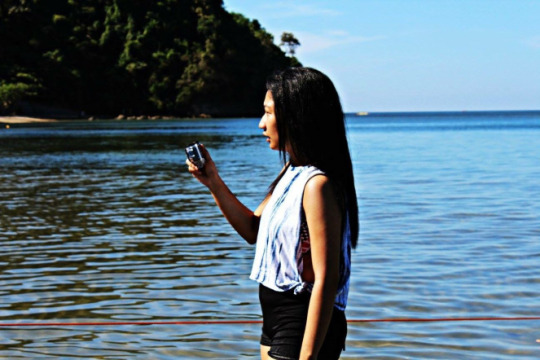

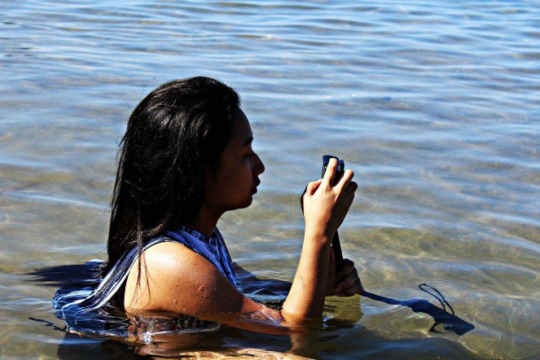
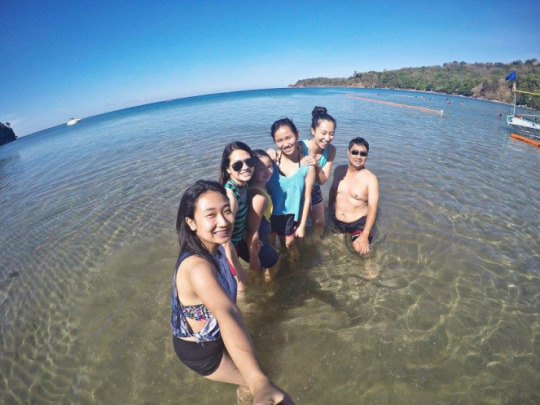


We left the beach around 11am and headed to Vista Tala. We stopped first at Nanay Susan’s Lomi house, a famous one in the vicinity to have a quick-lunch. This is where then my stomach ache started. After lomi and gotto, we went now to the resort. I was really feeling my tummy upset and was having cold sweats while waiting for the keys. I went to their in-house resto and there I had my first explosive poop. As expected, it was watery but I was surprised to find it clear and not smelly at all. Hmmm! I was still thankful it all happened there. Imagine if it started while we were still at the beach? Yikes!
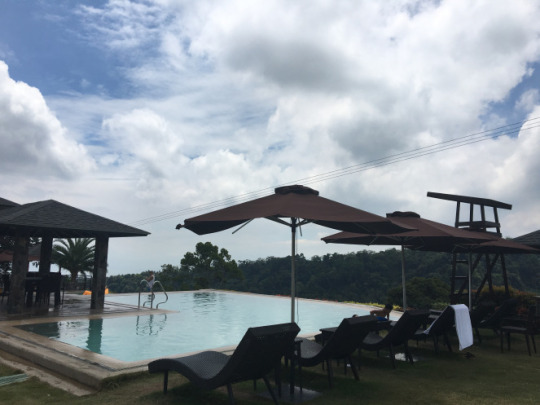
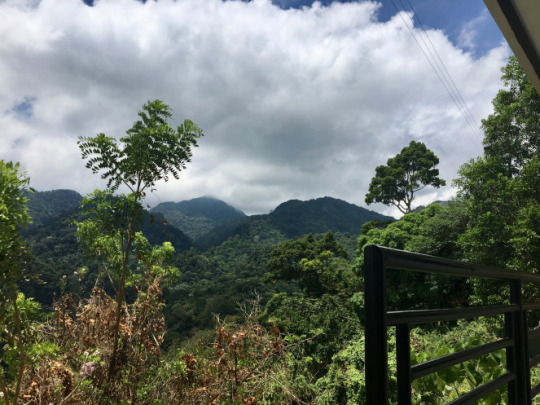
I was roomed with my sister and Ate Irish and Baby Raphael who’s 1yr and 7 months old. After getting settled we wore our swimwears and went to explore the resort. It was really cold up there since it’s situated on the top of the mountain. You could see a large horizon of mountains and trees from any angle. There’s also a zipline that I missed to try because of my stomach. We had photo ops and swam on their small but cozy infinity pool before we prepped for dinner.
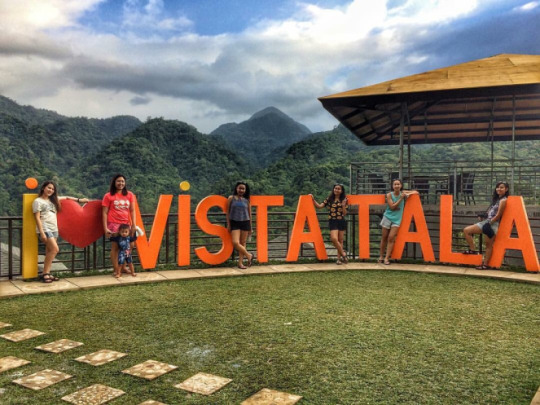

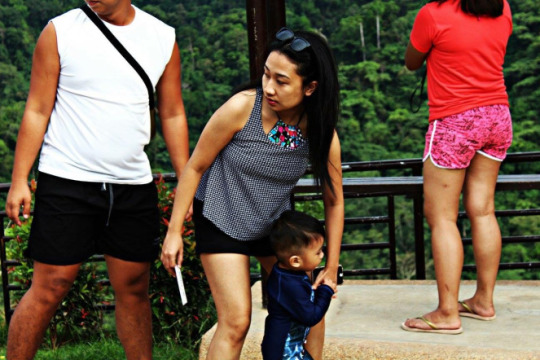

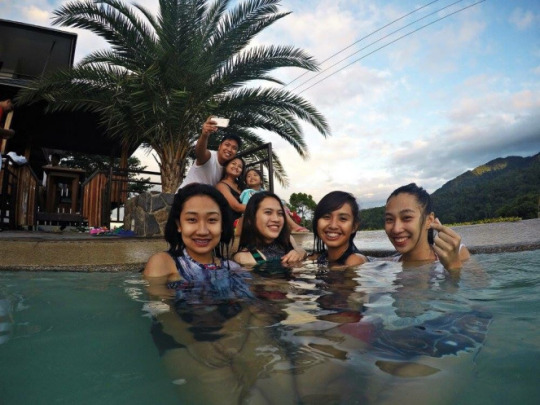

At exactly 7pm, we all gathered in the private KTV room of their in-house resto. Tita Au ordered nachos, sisig, pancit canton and chicken wings and cucumber lemonades for all of us to enjoy. I was bummed that I only ate a little because I was afraid that my tummy will do somersault. At that point, I think I had 4 episodes already of still watery but not so smelly poops. All 16 of us enjoyed a night of singing and some had few cans of beer too. I ordered one but ended up not drinking it. At 10pm, we all retreated to our respective rooms and agreed to meet at the breakfast buffet the next morning. As soon as we get to our room, I fell straight to bed and was instantly knocked out. I was awaken at 12:30 because I was freezing and I felt a need to poop once again. (Damn! I realized at that rate, I would be needing some LRS when I get back to Manila.) Then instantly fell back to sleep til the morning.

April 16, 2017, Sunday
Our room was the last to get into the restaurant because: one, it was still so early and two, our room was far from theirs and there was no signal in the entire resort. After breakfast, we all agreed that we’ll check out early to avoid heavy traffic back to the Metro. We all get dressed and packed then after 4 of my cousins tried the zipline. I was left with Baby Raphael who just slept the moment we got to the other room. The crying must have worn him out.

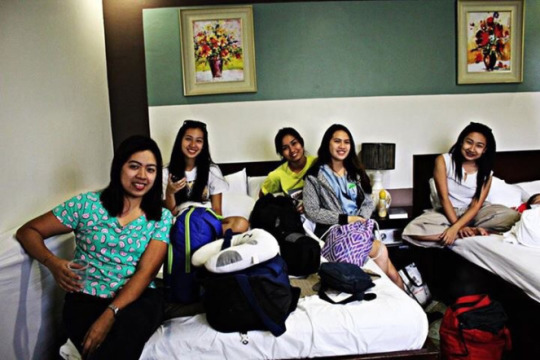
We left the place at 11:30am and headed back to Orani to pick up some goodies and had our last lunch there.
Overall it was nice but low-key outing. I enjoyed alot despite my stomach issues and I was grateful that once again we got to experience the tradition we enjoyed when we were still kids. ULTIMATE COUSIN GOALS!
Photo Credits: Tricia, Jiecel, Krystel, Ara and Tita Baby – I was enjoying too much to remember taking shots even if I have planned to blog this trip out. Thanks for these photos.
Peninsula De Bataan, Orani, Bataan
Website:https://www.facebook.com/pages/Peninsula-de-Bataan-Orani-Bataan/251839694839068
Vista Tala Resort and Recreational Park, Brgy. Tala, Orani Bataan
Contact Number: +63917-569-9479; +6399-990-4680
Website: https://www.facebook.com/vistatala/
0 notes